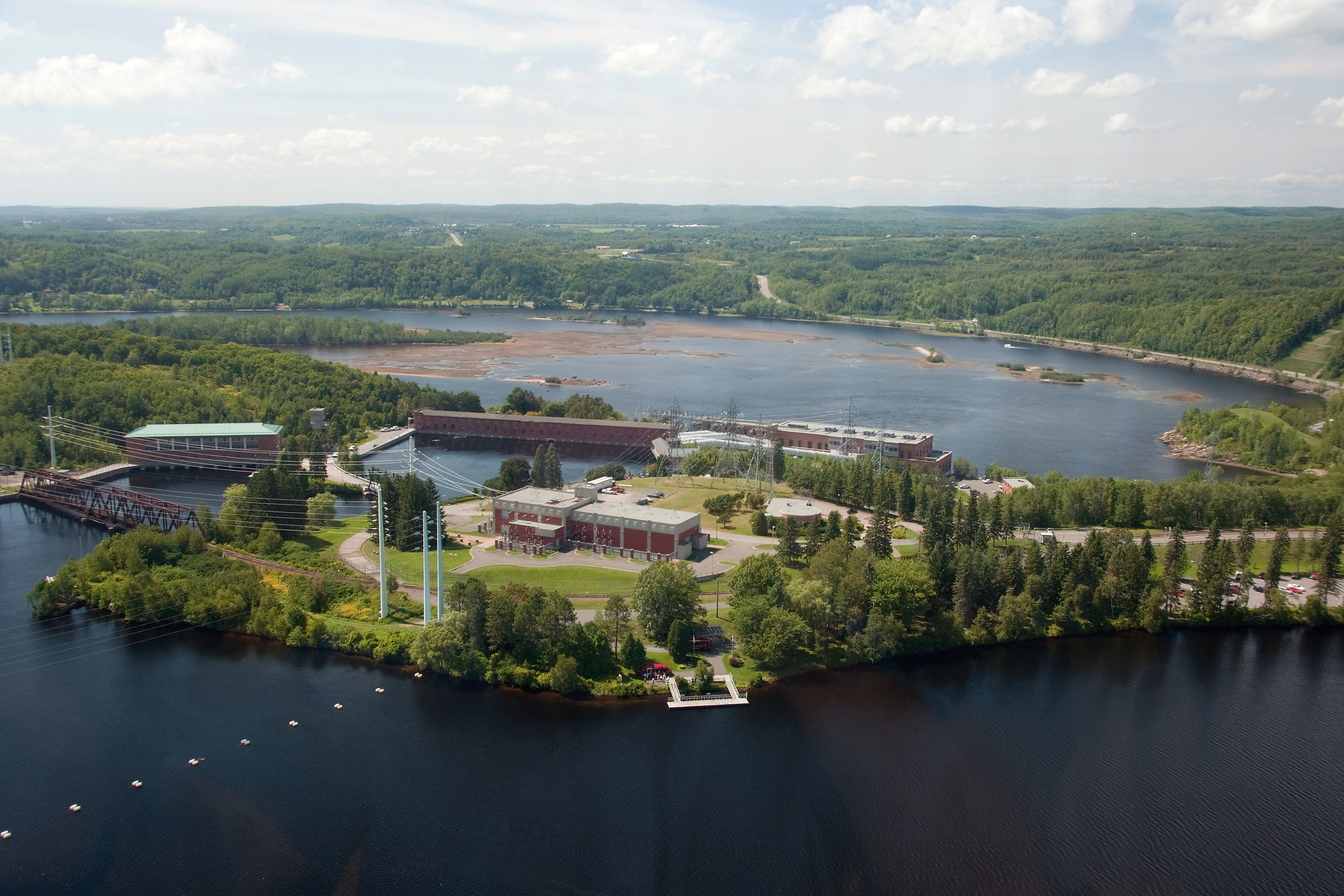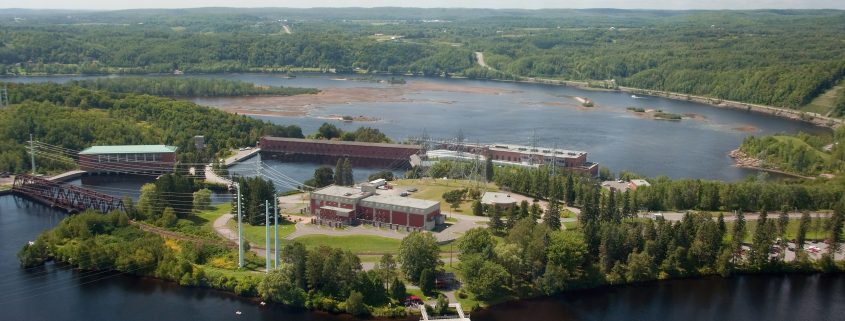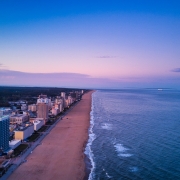North America Clean Energy Plan Could Boost Canadian Hydropower
Leaders pledge more use of low-carbon fuels.

Shawinigan hydropower complex, in Quebec, has generated electricity for more than 100 years. The North American Clean Energy Plan, announced on June 29, 2016, could boost Canadian hydropower production. Photo © Shutterstock
By Brett Walton, Circle of Blue
At a summit in Ottawa today, the leaders of Canada, Mexico, and the United States agreed to accelerate North America’s development of low-carbon energy sources, pledging that half of their combined electricity use will come from “clean” fuel sources by 2025.
“We recognize that our highly integrated economies and energy systems afford a tremendous opportunity to harness growth in our continuing transition to a clean energy economy,” Justin Trudeau of Canada, Enrique Peña Nieto of Mexico, and Barack Obama of the United States said in a statement from the North American Leaders Summit.
The agreement defines “clean” as renewables such as solar, wind, and hydropower, nuclear energy, fossil fuel plants that capture carbon, and energy efficiency projects that reduce demand.
The deal, not legally binding, seems grander than it is. Non-carbon sources account for 37 percent of electricity today in the three countries. Projections based on current trends and policies indicate that the total in 2025 will be 46 percent, according to Doug Vine, energy fellow with the Center for Climate and Energy Solutions. Achieving the target will require more effort but not much, he says.
Nonetheless, analysts say the deal along with national and regional renewable energy plans could invigorate U.S. interest in Canadian hydropower, particularly for states looking to reduce carbon emissions to comply with state mandates or with the federal government’s clean power plan. The clean power plan, currently on hold after a Supreme Court decision in February, requires U.S. carbon emissions from power plants to decline 32 percent from 2005 levels by 2030.
“I think it’s a huge opportunity for Canadian hydropower,” Philip Gass, an energy researcher with the International Institute for Sustainable Development. Canada gets three-fifths of its electricity from flowing water and its provinces are looking to sell more to their southern neighbors. In 2011, Manitoba Hydro, a Canadian generator, and Minnesota Power, a U.S. utility, signed a 15-year power purchase agreement for 250 megawatts.
“There’s more opportunity and appetite in the U.S. for Canadian hydropower,” Gass said, noting that more such deals should be expected. The agreement states that the countries will pursue “aggressive domestic initiatives and policies” that prioritize clean energy. That includes Canada’s efforts to increase wind and hydropower generation.
Getting the power across the border, however, will be another challenge.
Transmission
A number of transmission lines already connect Canada and the United States. At least six high-voltage lines with the capacity to deliver 5,000 megawatts across the border are currently under review. Many smaller lines in Quebec, Ontario, and Manitoba, the provinces with the highest electricity exports, are also being built to move energy southward.
The clean energy agreement signed today affirms federal support for cross-border transmission lines. Energy grid operators also support increased integration because drawing electricity from a greater variety of sources helps to incorporate more intermittent renewables such as wind energy into the power mix.
The energy links require partnerships on both sides of the border. Manitoba Hydro is building the Manitoba-Minnesota transmission line, which will increase the province’s export capacity by 40 percent and double its import capacity. In April, Minnesota Public Utilities Commission approved the route for the Great Northern transmission line, which will connect to Manitoba’s segment. Once completed, the connection will allow the power purchase agreement signed in 2011 to be fulfilled.
Quebec, meanwhile, wants to send electricity to New England. The New England Clean Power Link is a 1,000 megawatt, $US 1.2 billion high-voltage line across Vermont. It won federal approval in October 2015 and state approval in January. It would feed electricity into a highly integrated New England grid.
In his state of the commonwealth speech in January, Massachusetts Gov. Charlie Baker called for increasing hydropower imports from Canada. His plan would source roughly one-third of the state’s electricity from Canada through 15-year to 25-year contracts.
Other New England transmission lines under review include the $US 2 billion Northeast Energy Link and the $US 2.2 billion Champlain Hudson Power Express. The $US 8 billion Romaine hydropower project, being developed in stages in Quebec, will add 1,500 megawatts of generating capacity.
“If we want more Canadian renewables, we will need more transmission lines from Canada,” Vine told Circle of Blue.
The question that state officials, grid regulators, environmental advocates, and consumer groups are now asking is: Do we want more Canadian electricity? And at what cost?
Opposition
Not everyone is thrilled with a potential increase in Canadian hydropower. Green groups point out that reservoirs built in boreal forests such as in Canada do release carbon dioxide and methane into the atmosphere, albeit much less than the most efficient natural gas power plants. Emissions from new reservoirs peak three to five years after construction and then decline to resemble a natural lake, according to Hydro-Quebec measurements. A seven-year study of Eastmain-1, a large hydropower complex in Quebec, found more carbon emissions from the reservoir site than from an undeveloped landscape.
In addition, construction of new reservoirs in Quebec met resistance from First Nations, whose traditional lands the dams often flood. Members of the Nutashkuan Innu blocked the Romaine 3 construction site last July, protesting the effects on salmon. Mercury levels spike in boreal reservoirs immediately after construction, a concern for people who consume a lot of fish.
In the United States, one branch of opposition centers on the plowing of forests to build the transmission lines. The New England Clean Power Link, which receives passing marks from green groups, will run on the bed of Lake Champlain and underground, but Northern Pass, one of the most controversial proposals, will stand above ground in New Hampshire for 212 kilometers (132 miles).
Even with the siting challenges, an open public process can alleviate most transmission concerns, said Greg Cunningham, director of clean energy and climate change program at the Conservation Law Foundation, which is deeply involved in New England energy issues.
“It doesn’t mean no impacts,” Cunningham told Circle of Blue. “It means mitigating impacts. Transmission is complicated but surmountable. It’s about finding appropriate locations.”
Another branch of criticism is economic. Critics claim that the length of the contracts and the price locks the region into a single power source at a time when the market is rapidly evolving and low-cost solar and wind are coming online. The cost of the transmission lines is another disadvantage.
Gov. Baker’s hydropower plan would “undermine an economically as well as environmentally sustainable environment for the electric industry in Massachusetts,” concluded Susan Tierney, an energy analyst in Boston and a former assistant secretary for policy at the U.S. Department of Energy. The state Legislature is now debating how much emphasis a new energy bill should give to wind power versus imported hydropower.
Whether Canada, Mexico, and the United States meet the 2025 clean energy target largely depends on what happens in the United States, which is by far the largest electricity consumer. If nuclear power plant keep closing, the clean energy gap will be widened, Vine said. More nuclear retirements could hand hydropower proponents another argument.
Brett writes about agriculture, energy, infrastructure, and the politics and economics of water in the United States. He also writes the Federal Water Tap, Circle of Blue’s weekly digest of U.S. government water news. He is the winner of two Society of Environmental Journalists reporting awards, one of the top honors in American environmental journalism: first place for explanatory reporting for a series on septic system pollution in the United States(2016) and third place for beat reporting in a small market (2014). He received the Sierra Club’s Distinguished Service Award in 2018. Brett lives in Seattle, where he hikes the mountains and bakes pies. Contact Brett Walton






